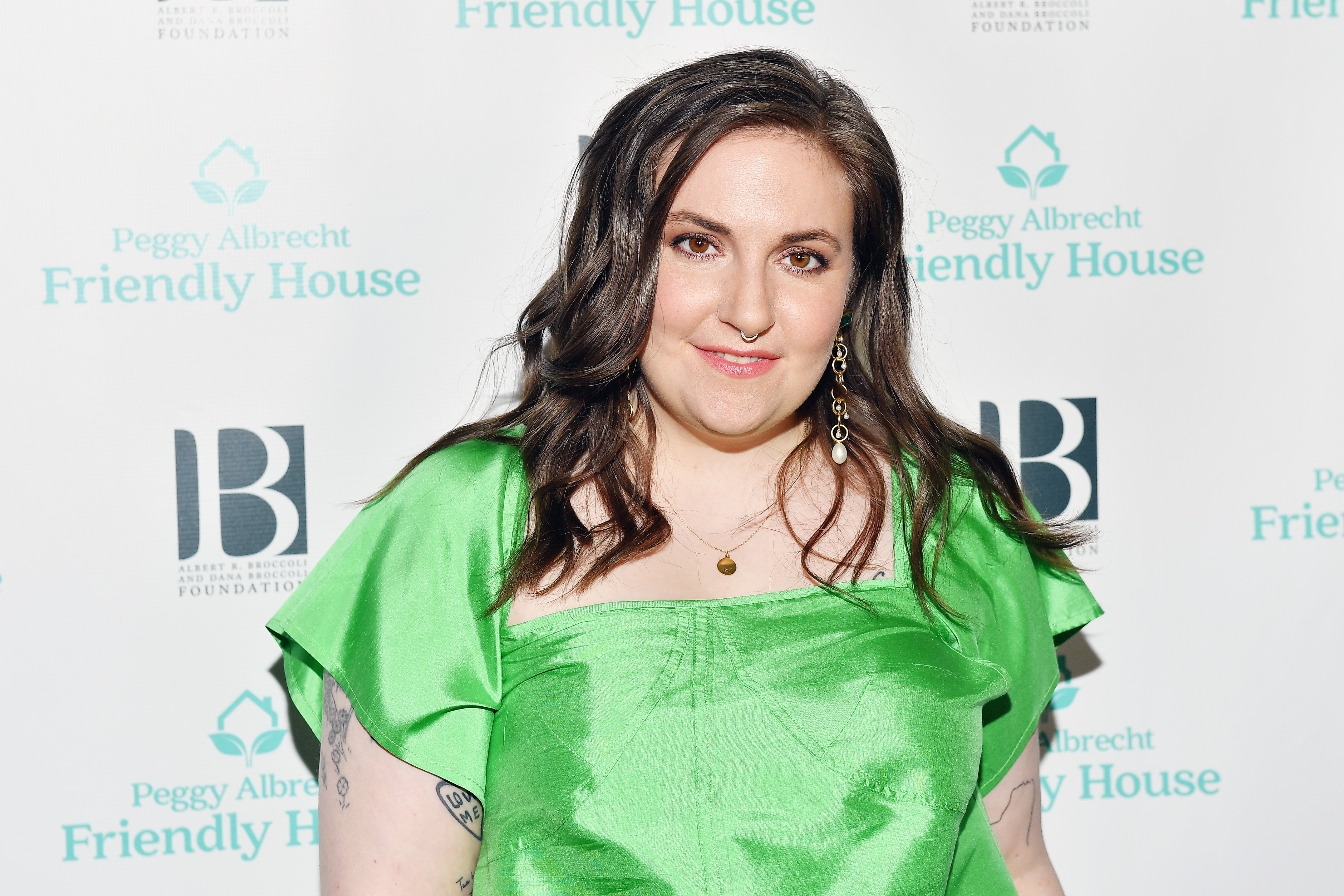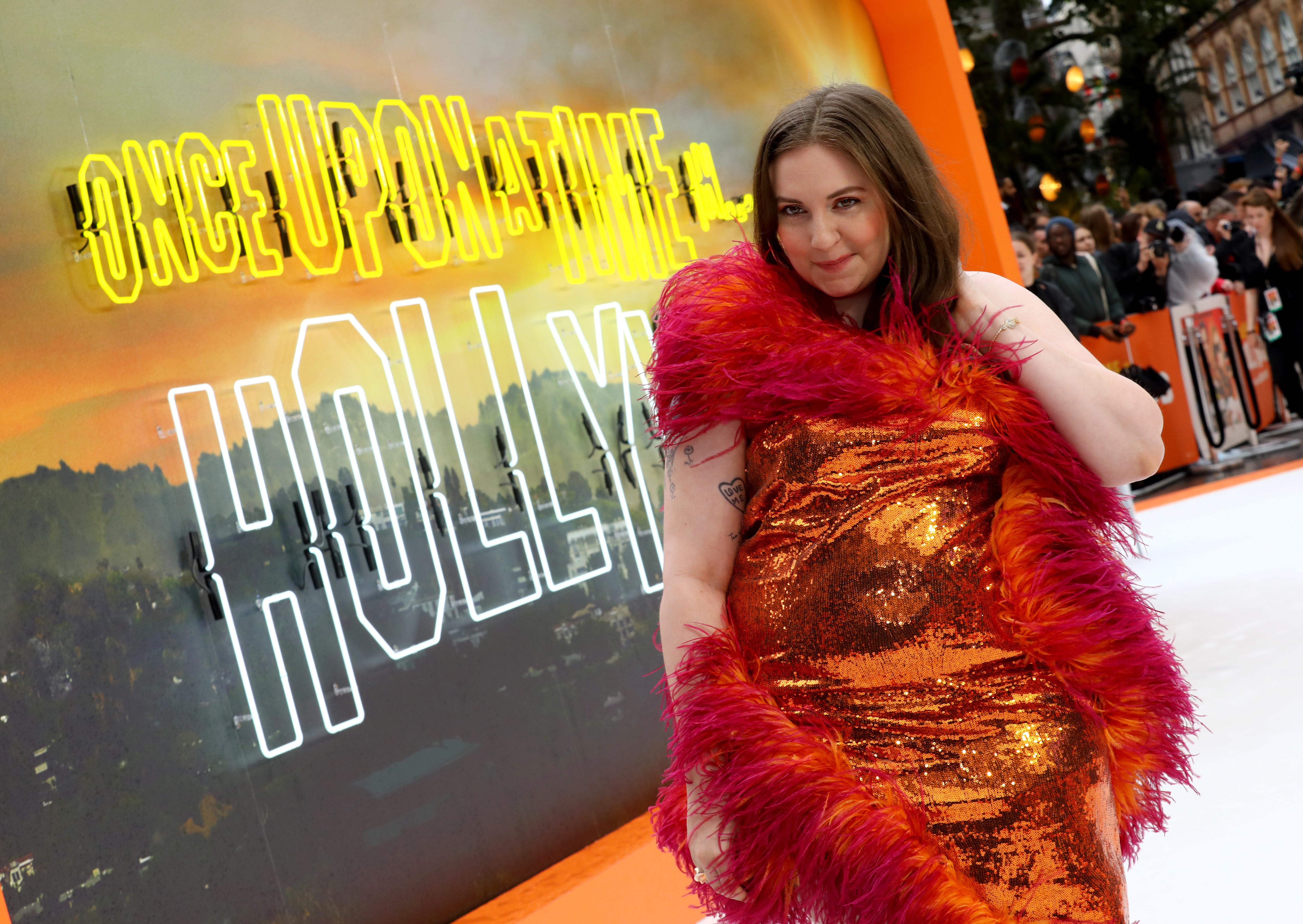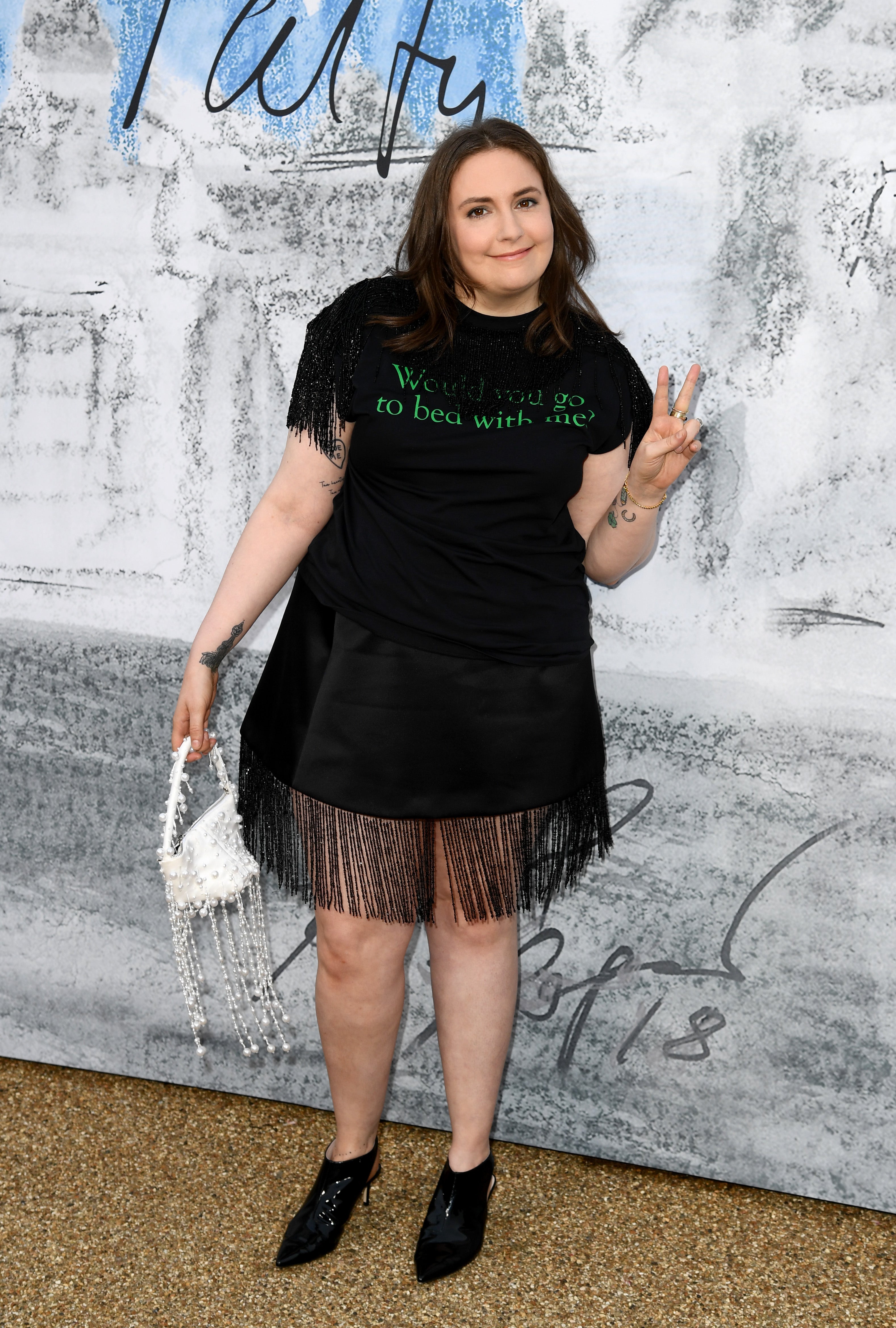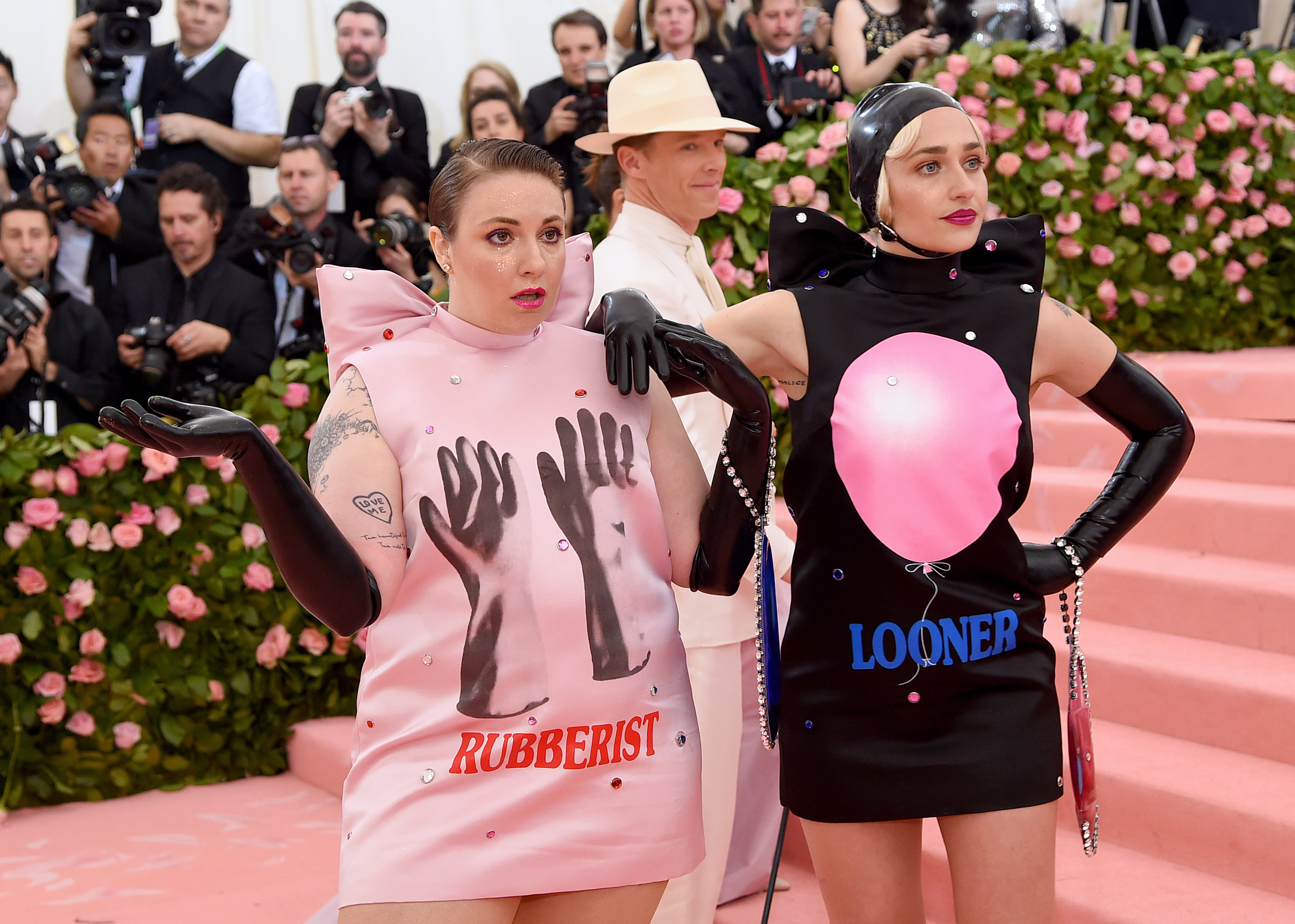Lena Dunham: ‘This clothing line is a direct response to my experience’
After years of having a complicated and very public relationship with her body, the actor is releasing her own fashion designs. She speaks to Vanessa Friedman

Your support helps us to tell the story
From reproductive rights to climate change to Big Tech, The Independent is on the ground when the story is developing. Whether it's investigating the financials of Elon Musk's pro-Trump PAC or producing our latest documentary, 'The A Word', which shines a light on the American women fighting for reproductive rights, we know how important it is to parse out the facts from the messaging.
At such a critical moment in US history, we need reporters on the ground. Your donation allows us to keep sending journalists to speak to both sides of the story.
The Independent is trusted by Americans across the entire political spectrum. And unlike many other quality news outlets, we choose not to lock Americans out of our reporting and analysis with paywalls. We believe quality journalism should be available to everyone, paid for by those who can afford it.
Your support makes all the difference.In the 10 or so years since she first became famous, Lena Dunham has been many things. She has been a wunderkind, a writer-director-actor-producer of both feature films and television series, voice of her generation, David Remnick mentee, Golden Globe winner and representative of liberal white privilege. She has been a Vogue cover girl, newsletter maven and subject of social media shaming. Also head of her own book imprint at Random House, endometriosis and hysterectomy survivor, and over-sharer.
She has been so many things, in fact (seriously, has it been only 10 years?), that it is kind of extraordinary to realise that one thing she hasn’t been is that increasingly beloved side hustle of almost anyone in the public eye: a fashion designer.
Of course, that may be because another thing she has been is an often unfairly mocked presence on the red carpet, subject of cavalier memes and style-police cruelty.
“I am not,” she says, “a celebrity who’s ever been asked to represent a product. I am not a person for many reasons who anyone even wants to represent a product.” She does, however, love clothes.
Read More:
And in the process of wearing a lot of clothes, and getting a lot of clothes “slightly wrong”, and being attacked for the clothes she wore, she discovered a hole in the market. So being Lena Dunham, she decided she was the one to fix it.
Now, 11 Honoré x Lena Dunham, a collaboration between Dunham and the e-tail site that has championed high fashion for plus-size women, is getting runway designers to make their brands accessible beyond size 10. It will be 11 Honoré’s first celebrity foray, and it is a tightly edited collection of only five items, because, Dunham says, “I’ve totally given up on the idea of being any type of impresario or person who had something to say to everyone.” She is speaking over a Zoom call from London, where she has been holed up shooting a film.
“Right now the only thing I’m doing is speaking about my own experience,” she says. “So this clothing line is a direct response to my experience.”
Introducing Lena, version 8.0 (or 15.0?): humble-but-enthusiastic body-neutral advocate and new celebrity designer, at peace with herself and about to emerge into the world once more.
Not just because she has another movie on the way (besides the film she is working on in London), called Sharp Stick and written during the pandemic summer as “a meditation on the complexity of, uh, female sexual desire and how it intersects with trauma”.
But also because she is not only the designer of the clothing line, along with Danielle Williams Eke of 11 Honoré, but its face and model. Yup, she’s putting herself out there again.
She knows what that may entail.
Body positivity… sort of
After years of having a complicated and very public relationship with her body, of yo-yoing in weight because of medical and personal issues, Dunham, 34, has come to terms with it.
Last March, she got coronavirus. Everyone knows this, because she later posted “My Covid story” on Instagram, where she has 2.8 million followers. Though she has recovered, the disease affected her pituitary gland and left her with partial adrenal insufficiency, she says, so she is taking steroids.
We want big beautiful butts and big beautiful breasts and no cellulite and faces that look like you could smack them on to thin women
“Not the cool kind that make you muscular,” she says. “Just the kind that make your face fat. I’m trying to roll with that. Trying to be chin positive. I can deal with anything, but a triple chin is a hard place to land.”
Still, she is careful to thank her medical team and talk about how she knows she is privileged to have access to private health care and to be able to do a job.
“It doesn’t mean I haven’t felt a lot of body hatred in lockdown,” she says. She is not a fan of some current terminology, of words like “plus” or “curve” or “body positive”.
“The thing that’s complicated about the body-positive movement,” she says, “is it can be for the privileged few who have a body that looks the way people want to feel positive. We want curvy bodies that look like Kim Kardashian has been upsized slightly. We want big beautiful butts and big beautiful breasts and no cellulite and faces that look like you could smack them on to thin women.”
“I have a big stomach, I always have. That’s where I gain my weight – especially after early menopause, I have a straight-up gut, like an old man – and that’s not where anybody wants to see flesh. It’s not like if I posted a sensual nude of myself on Instagram, people would be marvelling at my beautiful derriere.”
As she says this, she does not sound angry or depressed or like she is sticking it to the man. She sounds sort of resigned and amused at herself. She is sitting in a very white room with a fireplace, wearing a cable-knit cardigan and lots of rings on her fingers. Her hair is long, and her bangs are short. In the middle of the conversation, she suddenly begins to eat a sandwich, which makes her laugh.

“It seems appropriate for this interview that I eat this large baguette,” she says.
‘We’re going to put a watermelon on your skirt, you sassy girl!’
Dunham had been contemplating getting into fashion long before the pandemic began. She had originally thought she would make a fully fledged collection from size 0 to 20, because… well, she doesn’t really do half measures. Besides, she’s smart enough, and does enough research, to know that there is a proud history of female designers getting into the business because they know what is missing, whether it’s Coco Chanel or Donna Karan or even the Olsens. But, she says, “There was so much I didn’t know about the infrastructure.”
In 2019, she met Patrick Herning, the owner and founder of 11 Honoré, where she happened to be a frequent shopper. The two bonded over proselytising for plus-size figures and began hatching a plan. Because Herning had recently introduced a private label line, he had the supply chain and design staff in place for Dunham. All she had to bring were the ideas.
“I said, ‘You’re an actor, you’re a storyteller, let’s do this, and then we can do a sequel – Season 2,” he said.
Here’s where she started: “What I really love in fashion is a certain level of playfulness and winky intelligence that people just don’t think bigger women want or understand. No one thinks plus women have a sense of humour, and if they do, it’s, ‘We’re going to put a watermelon on your skirt, you sassy girl!’ None of it has subtlety or true sophistication.”

“There’s so much judgement around bigger bodies, and I think one of the judgements is that bigger women are stupider,” she continues. “They eat too much and don’t know how to stop. Thin women must be discerning and able to use their willpower. Bigger women must be limited in their understanding of the world, and they keep doing things that are bad for them. The amount of people who have written to me on my page: ‘You’re promoting obesity. Don’t you understand you’re killing yourself? Are you stupid? Why are you doing that?’”
For her, fashion is character. She has a new boyfriend, whom she met in London – “It’s been a few months,” she says. “I feel really lucky.” He is a musician, she adds, raised in England and Peru, and “the greatest person I’ve ever met” – and when she borrows his hat and leather jacket, she says, “I want to man-spread!” She considers the designers she loves, including Rachel Comey and Giambattista Valli and Christopher Kane, to be artists, so when she wears their clothes on the red carpet she is celebrating their art.
“That’s why I never understand why anyone would want to go out on the red carpet in a nude column dress,” she says.
For the record, she has never appeared on the red carpet in a nude column dress. She has worn her fair share of little black dresses, but she is more famous for the kind of dresses that are the opposite of LBDs. Like the pink minidress with rubber gloves superimposed on the front along with the word “rubberist”, which she wore in 2019 to the Met Gala in honour of “Camp”. It made her look like a Flower Fairy by way of Marcel Duchamp.
I can’t wear it because I’m basically showing what my mother would refer to as my pupick
In any case, she says: “The only way I’ve been able to make the red carpet interesting, or in any way meaningful, is to be myself with no concern for whether the people who are watching are going to anoint it best or worst anything, because then at least I’m saying something about being a woman in this body that only I can say. And maybe there’s some girl at home going to her prom and she feels like she doesn’t have the right body and she sees me in this weird nutty dress and she feels like, ‘If that girl can go to the Emmys dressed like that, then maybe I can show up to my junior prom dressed like this.’”
What designers don’t understand
The clothes Dunham has helped make for 11 Honoré are not exactly nutty – they definitely are not going to change the world – but they have a little lift. She describes them as clothes for a day walking around New York’s SoHo doing all sorts of things.
They were inspired, she says, by the women she remembers from the 1990s, like Cindy Sherman and Kiki Smith, who would clomp around in men’s shirts and Yohji Yamamoto skirts and unbrushed hair because their very active minds were on other things. That’s a description that may overexcite those who associate her with elitism, but also one that is not entirely inaccurate.
Dunham’s mother, the artist and photographer Laurie Simmons, named each look after one of the family’s old haunts in SoHo, like the original Dean & DeLuca store on Broadway (now closed), which is the name of a navy pinstriped suit with scalloped hems on the jacket (Dean) and skirt (DeLuca).
Dunham’s father, Carroll Dunham, who is a painter, made the print for a geometric floral dress with an asymmetric hem that is called Madderlake, after a florist that also used to be on Broadway. The capsule collection will cost between $98 (for a ribbed mock-turtleneck cotton jersey tank) and $298 (for the jacket), and sizes run from 12 to 26. (She herself has “settled into a size 14 to 16”.)

Dunham says she spent a lot of time on the fit because one of the things most designers don’t understand is that making clothes for bigger bodies doesn’t mean just adding more fabric or cutting the waist wider. You need to employ darts differently to encompass stomach curves and bottom curves and upper arms that swell in the heat. She really wanted to include a miniskirt because whenever she tried to find one, it would hitch up in the back and, she says, “I can’t wear it because I’m basically showing what my mother would refer to as my pupick.”
What is not in the line is loungewear, despite all the talk about the pandemic and how it will change how we dress. “If a thin girl wears sweatpants, it’s kind of cute – like, ‘I’m having a rough day!’” Dunham says simply. “But for a chubby girl it’s, ‘You’ve made a lifestyle choice to give up.’” The whole point of this exercise, after all, is not giving up and not just accepting what’s out there.
Rachel Comey, for one, is looking forward to it. “Lena has such a valuable voice,” she wrote in an email. Herning said that if the first drop works, there will be another, probably more expansive.
Dunham thinks it would be fun to do winter wear, pajamas and swimwear. But first, the introduction. Even though she has been lying low, at least in Lena Dunham terms, she is still something of a lightning rod for those who find her willingness to expose herself physically and emotionally – to talk about her pain and her issues – touching and those who find it infuriating. When she posted a photo of herself in the miniskirt suit as a sort of teaser, most of the comments were along the lines of “Yay!” but some still shamed her about her weight.
“The thing that’s been really interesting is how angry it makes people when you dress like yourself,” Dunham says. “It’s not, ‘Oh, I don’t like that dress.’ It’s, ‘How dare you?’ And it’s fascinating how much of that comes from other women with bodies that look like mine. It’s not a male gym rat. It’s other women who have been indoctrinated with the same message: ‘Didn’t you get the memo? We’re all doing this. We’re all going to wear the Spanx.’”
Read More:
She refuses to wear Spanx – most of the time, she says, she barely wears a bra. The one time she did wear a corset to an event, Glenn Close cut it off her in a bathroom.
“She had a little butterfly scissor like a friggin’ angel,” Dunham says.
“She also gave me the best advice. I was crying in my heels, and she said, ‘You get platform boots from a rave store, and you wear those.’ And I did, and I have. So, thank you, Glenn Close.”
© The New York Times
Join our commenting forum
Join thought-provoking conversations, follow other Independent readers and see their replies
Comments